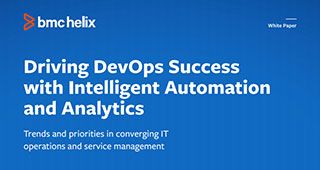A commonly held belief in business is that investment in R+D leads to creation and innovation. By that standard, a company who invests heavily in R+D should see innovative processes that result in increased sales, perhaps market success. Company lacking innovation? They probably need to double-down on their R+D efforts.
If only it were that simple. Businesses are complex. While we all search for some elusive calculation of investments in one certain area will guarantee success in another area, the data shows the truth: investing in R+D doesn’t promise innovation.
Strategy&, a unit of PwC, studies market success and innovation, culminating in an annual review of the Top 1,000 innovative companies. The last decade’s worth of data shows no statistically significant relationship between R+D expenditure and sustained financial performances that we normally associate with innovation. Strategy& has found that higher spending on R+D does not relate to increased sales or profit, market capitalization, or shareholder returns. In fact, the top 10 most innovative companies are rarely the top 10 R+D spenders.
Still, companies rely on some combination of R+D and innovation – the market demands it. Understanding how R+D and innovation work, conceptually and practically, and how to fund both, can help improve your bottom line.
(This article is part of our IT Cost Management Guide. Use the right-hand menu to navigate.)
Are R+D and innovation the same thing?
In short, no, R+D is not the same as innovation. The good news is that most people agree on the separation between R+D and innovation, but we haven’t reached consensus on the differences.
Some theories: that R+D is an early-stage component of innovation, an umbrella-term for commercializing findings and discoveries. Or, that R+D is a long-term play but innovation can be put into action, across a variety of business needs, in the near term. These various definitions indicate that both R+D and innovation are changing in today’s interconnected, outcomes-based marketplace.
This question is timely, especially for digital firms who are under immense pressure to constantly provide the next great solution. Yet this need for innovation plays out across all industries. The mega-pharma firm Pfizer has been known for their R+D for decades. In recent years, however, they’ve developed short-term innovation efforts that are wholly separate from R+D. What gives?
One school of thought is that the universal truth of a good product (the idea that a good product will sell, no matter what) is no longer a given. Today, organizations must go beyond mere products or technologies to be successful – whether it’s improved customer service, seeming to “do the right thing” on a moral issue, or a whole host of tangible and intangible metrics. A good product alone no longer promises a good business.
An academic approach holds that, in most companies, the purpose of R+D is threefold:
- Developing fundamental knowledge. This often means exploring certain technologies that have potential for massive industry impact, but neither their intrinsic value or practical application is known. Funding for this purpose is a fraction of the whole, but it is strategic, with little expectation for near-term growth or development.
- Supporting business areas like business management, manufacturing, and customer satisfaction. Functions are more tangible and necessary, like looking for strengths and weaknesses or upcoming trends that allow the company to create new business opportunities. This work isn’t necessarily ongoing, but perhaps focused on a certain timeline or business area.
- Creating and implementing new technologies. The output from this R+D arm can could be anything. Companies tend to see this R+D area as an investment instead of as a necessary operating cost, especially for short-term projects that are easier to measure and value.
In this multi-purpose vision of R+D, innovation can still come from anywhere, but when companies recognize and act on all three purposes, R+D may be more directly tied to an innovative outcome.
Funding R+D
With competing purposes for R+D, it’s no wonder that some companies often treat it as a non-essential expenditure. In the U.S., even the IRS sees it as such.
But recent research on digital firms in particular shows that R+D is essential. R+D is a necessary and important piece of operating expenses because, without it, most digital firms would be stopped in their digital tracks altogether.
Compare a fluid digital company, like Google, with a staid American company, like General Mills: it would be heresy to think Google shouldn’t improve current products and introduce new ones, but General Mills makes cereal and other products in much the same way it did decades ago. Google sees innovation beyond a search engine, with forays into individual software, artificial intelligence, mobile apps, enterprise services, hardware, and much more. General Mills’ innovations often seem to reduce a cereal’s fat or add in some fiber – perhaps a smaller win on the innovation continuum.
Today, economic success is measured less by a single product and more by the confluence of ideas, strategies, software and algorithms, the ever-elusive innovation. All these efforts require R+D. A recent study, published by the Harvard Business Review, surveyed five years of data from a variety of digital firms, including Yelp, Netflix, Facebook, and Alphabet as well as much smaller outfits. The results indicate that while established digital companies like these spent around 15-20 percent of their revenue, smaller digital firms often invest upwards of 50 percent. (Twitter spent 76 percent in 2013.)
Now, compare that to traditional companies who spent significantly less than that in 2017: GM spent two percent and Walmart spent zero on R+D.
Sure, traditional companies may work in other ways, but the way to fund R+D is changing, too. In the 20th century, obtaining financial capital necessary to fund innovative science research was difficult – you needed a lot of money with little tangible or guaranteed outcome. Today, though, financial capital isn’t the problem – digital companies bring in billions and many know how to obtain it from outside sources. But scarce is the scientific and engineering talent that drives R+D: fewer people have the hard science and engineering skills, so they cost more to retain.
Funding innovation
If R+D is driven by the need to create better or more innovative solutions, then innovation is driven by value. R+D might create interesting or important findings, but without a process that results in additional value, R+D can feel superfluous, even if we agree it’s essential.
True innovation, then, isn’t simply a “better” product, but one that offers new value to the customer. One strategy focuses on shifting some R+D spending: take 15 percent of your current R+D spending and invest it in a business-focused R+D process that aims to improve value propositions – whether through value-adds for the customers or in business models that can grow and scale. This business investment could include wholly new technologies and products as well as tweaks to your current business model that results from your “business R+D”.
Another way to fund innovation is to apply a start-up mentality: stop “cost cutting”, a move that signals hard times. Instead, redirect massive marketing budgets and money spent on tiny “innovations” that don’t move the needle much and funnel this money into R+D. This signals to shareholders that you’re retooling for growth and innovation, not shrinking away from a need to change.
Creating a positive correlation between R+D and innovation
Though R+D doesn’t guarantee innovation, applying a sustainable business model to getting innovation from your R+D can be fruitful. For instance, Intel combines massive R+D spending with a specific business model that takes advantage of R+D’s findings. This model, known as “tick tock”, focuses on two areas of Intel’s business: microarchitecture processes and manufacturing technology.
In a “tick” cycle, Intel focuses on advancing their manufacturing processes that indirectly benefit customers. In a “tock” cycle, the company built on these manufacturing changes in order to innovate their processes microarchitecture, resulting in increased speed or power (perhaps both) in the end product.
Another practice is to plan for two types of risks inherent in any business: technical risk, which relates to whether a business is able to create new, working technologies, whereas market risk considers whether customers will buy and use the product, even when the technology works.
Perhaps, then, innovation that results in a positive market impact requires both technical risk and market risk. Traditional R+D, on the other hand, focuses solely on technical risk, leaving market risk to other company departments.
Perhaps, instead of considering innovation as the natural result of sustained R+D, we revamp what innovation means: invention (via R+D) + customer value + a business model = innovation.







